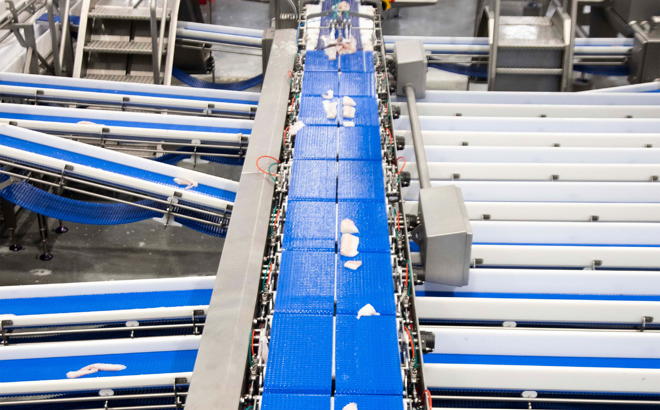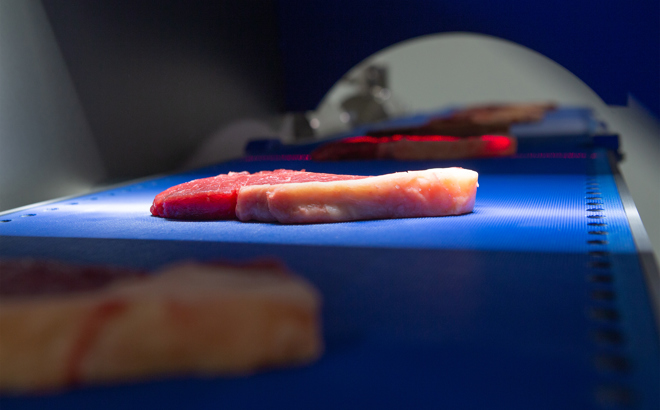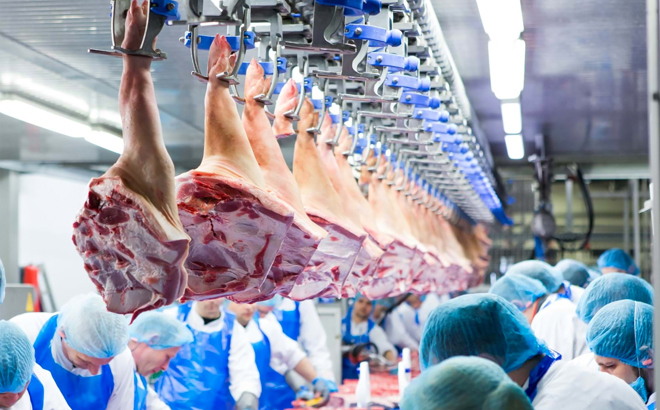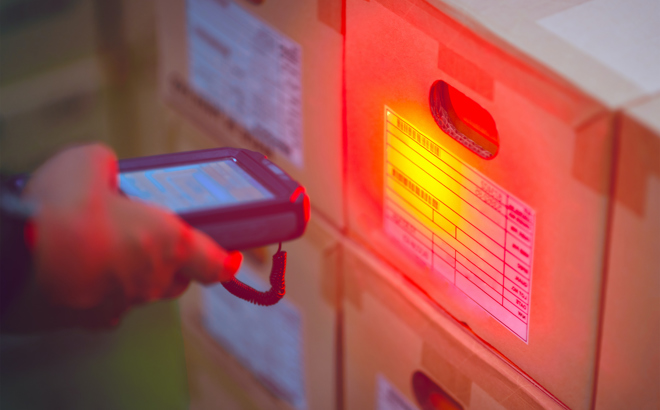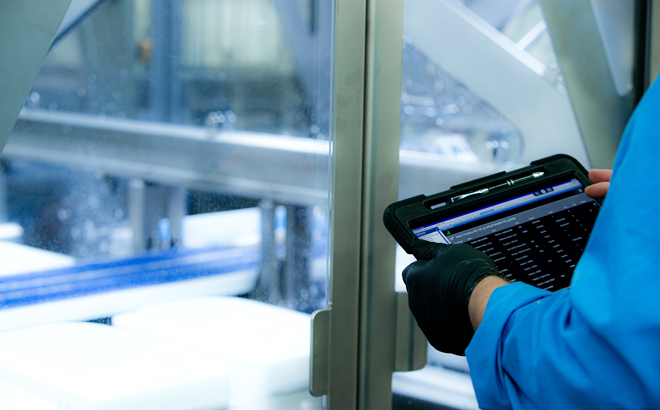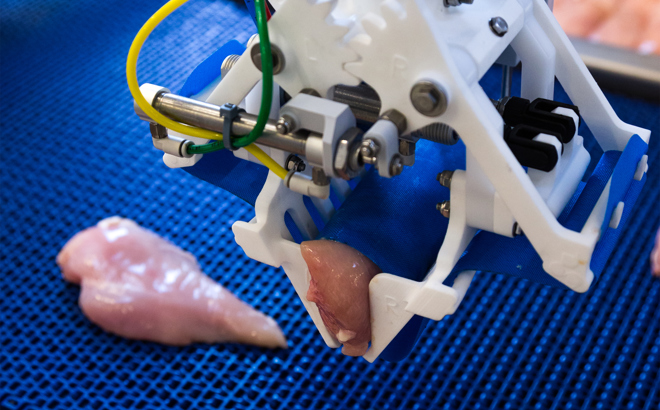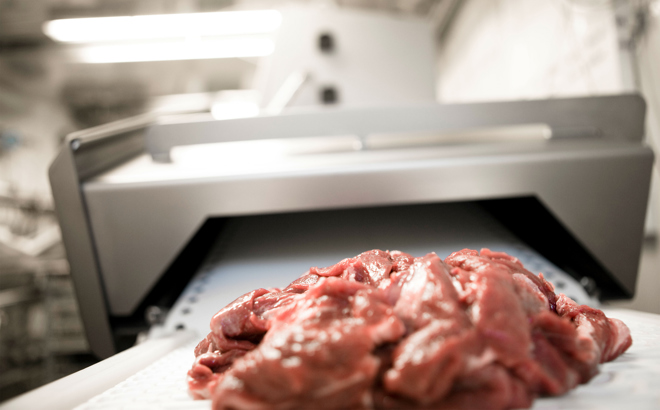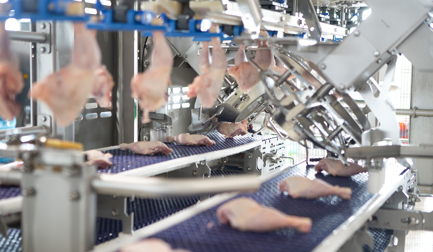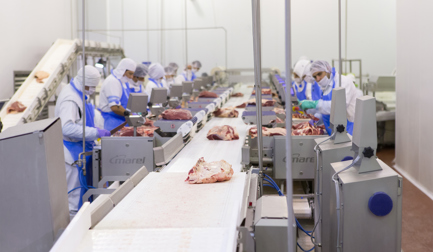Moving raw materials between production areas and different processes needs to happen fast. A highly automated production line reduces processing time with multiple benefits to the value chain. Here, the use of intelligent technology can greatly improve efficiency and safety in material handling and throughout the rest of the system.
A setup that ensures no contact between raw materials and the end product, as well as minimum manual handling, will lower the risk of contamination as well as help extend shelf life, maintain nutritional properties, and support food safety. You can raise efficiency further with a quality control system that monitors performance and responds quickly to any deviation.

